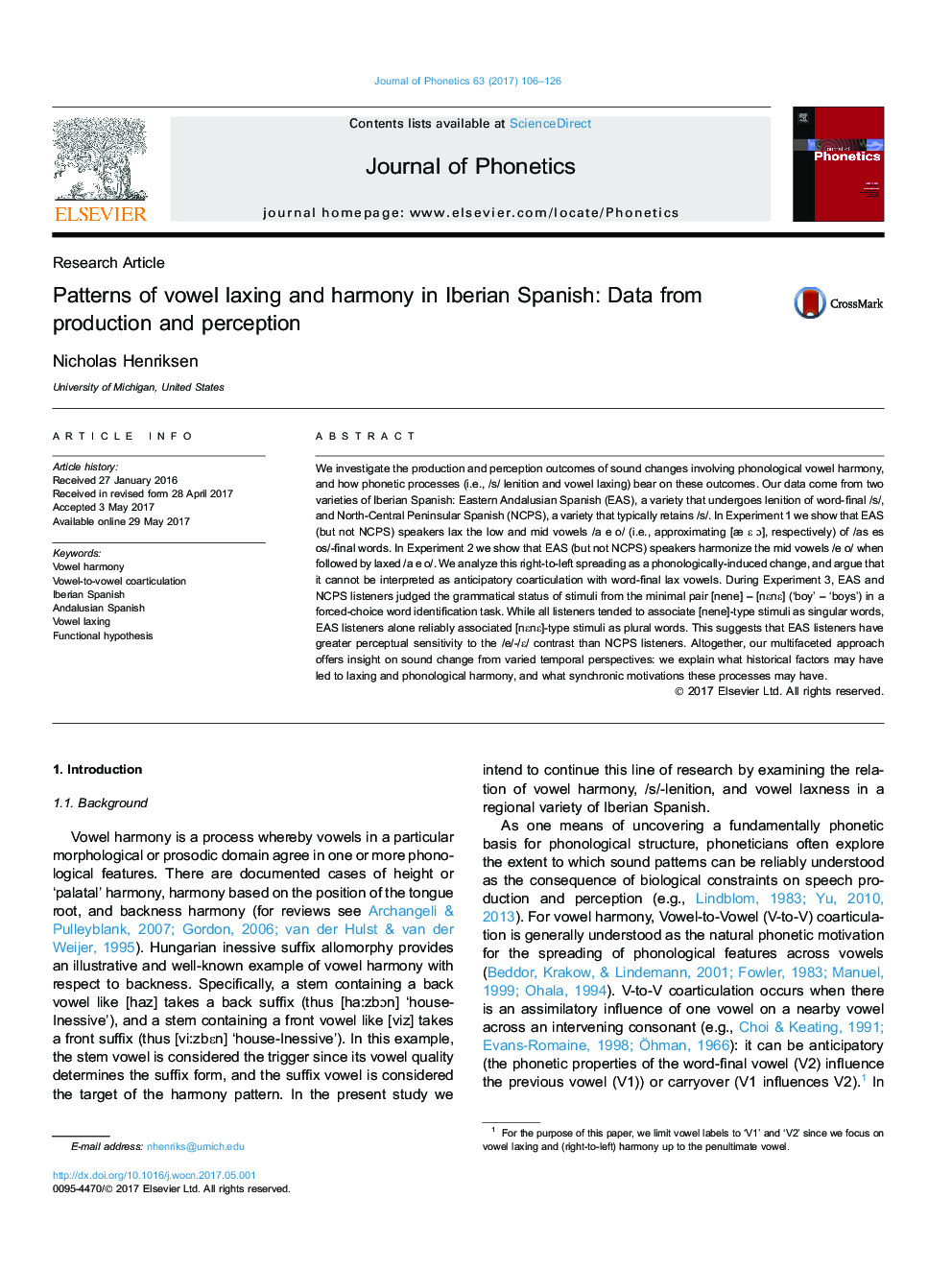| Article ID | Journal | Published Year | Pages | File Type |
|---|---|---|---|---|
| 5124071 | Journal of Phonetics | 2017 | 21 Pages |
â¢East And. Span. speakers lax /a e o/ (approximating [æ É É]) in /s/-final words.â¢Laxing was not found to compensate for the loss of a morphological /s/â¢East And. Span. speakers exhibit right-to-left phonological harmony targeting /e o/â¢No evidence of V-to-V phonetic coarticulation was uncovered in either Spanish variety.â¢East And. Span. listeners perceive [É] with greater sensitivity than NCPS listeners.
We investigate the production and perception outcomes of sound changes involving phonological vowel harmony, and how phonetic processes (i.e., /s/ lenition and vowel laxing) bear on these outcomes. Our data come from two varieties of Iberian Spanish: Eastern Andalusian Spanish (EAS), a variety that undergoes lenition of word-final /s/, and North-Central Peninsular Spanish (NCPS), a variety that typically retains /s/. In Experiment 1 we show that EAS (but not NCPS) speakers lax the low and mid vowels /a e o/ (i.e., approximating [æ É É], respectively) of /as es os/-final words. In Experiment 2 we show that EAS (but not NCPS) speakers harmonize the mid vowels /e o/ when followed by laxed /a e o/. We analyze this right-to-left spreading as a phonologically-induced change, and argue that it cannot be interpreted as anticipatory coarticulation with word-final lax vowels. During Experiment 3, EAS and NCPS listeners judged the grammatical status of stimuli from the minimal pair [nene] - [nεnε] ('boy' - 'boys') in a forced-choice word identification task. While all listeners tended to associate [nene]-type stimuli as singular words, EAS listeners alone reliably associated [nεnε]-type stimuli as plural words. This suggests that EAS listeners have greater perceptual sensitivity to the /e/-/ε/ contrast than NCPS listeners. Altogether, our multifaceted approach offers insight on sound change from varied temporal perspectives: we explain what historical factors may have led to laxing and phonological harmony, and what synchronic motivations these processes may have.
